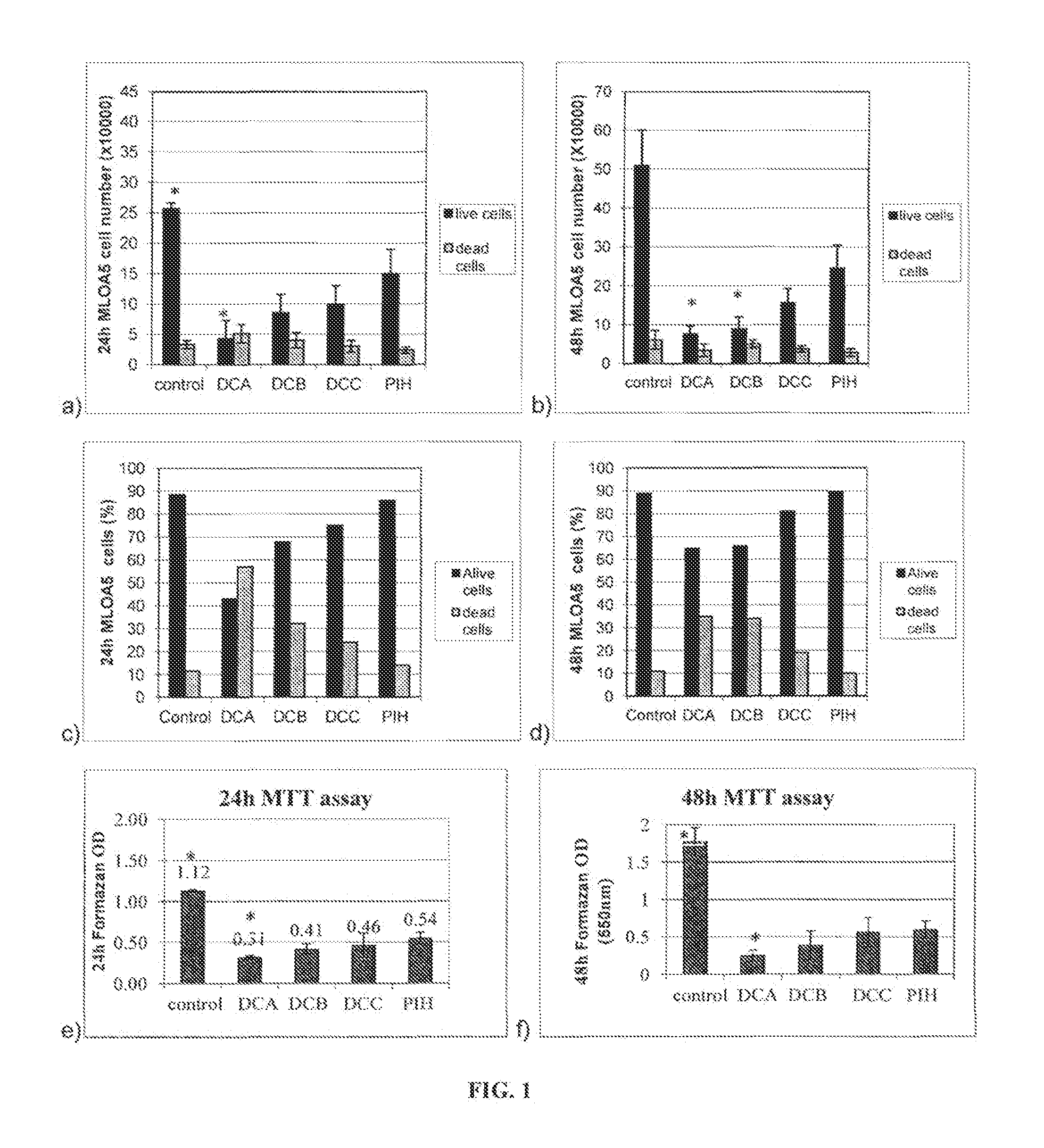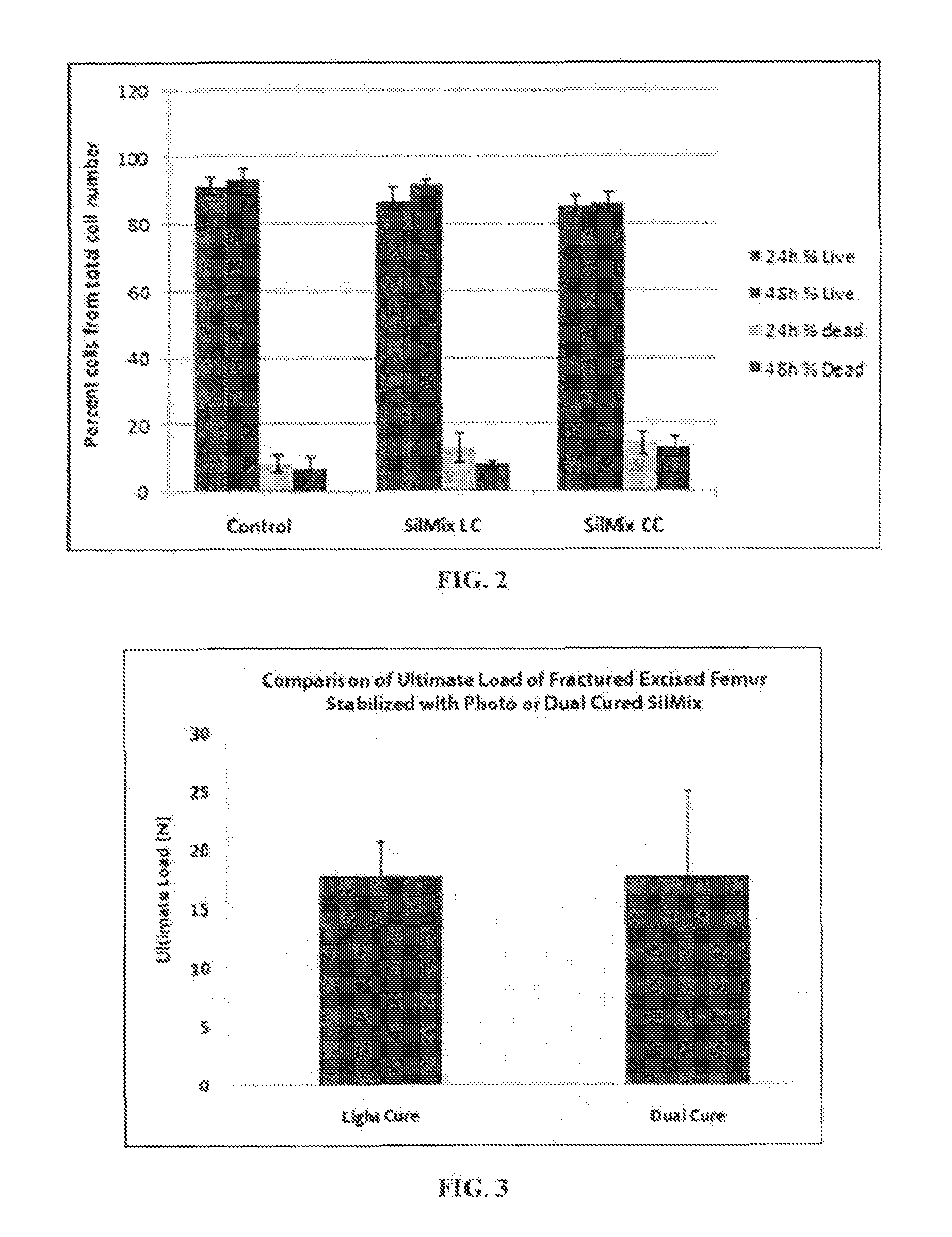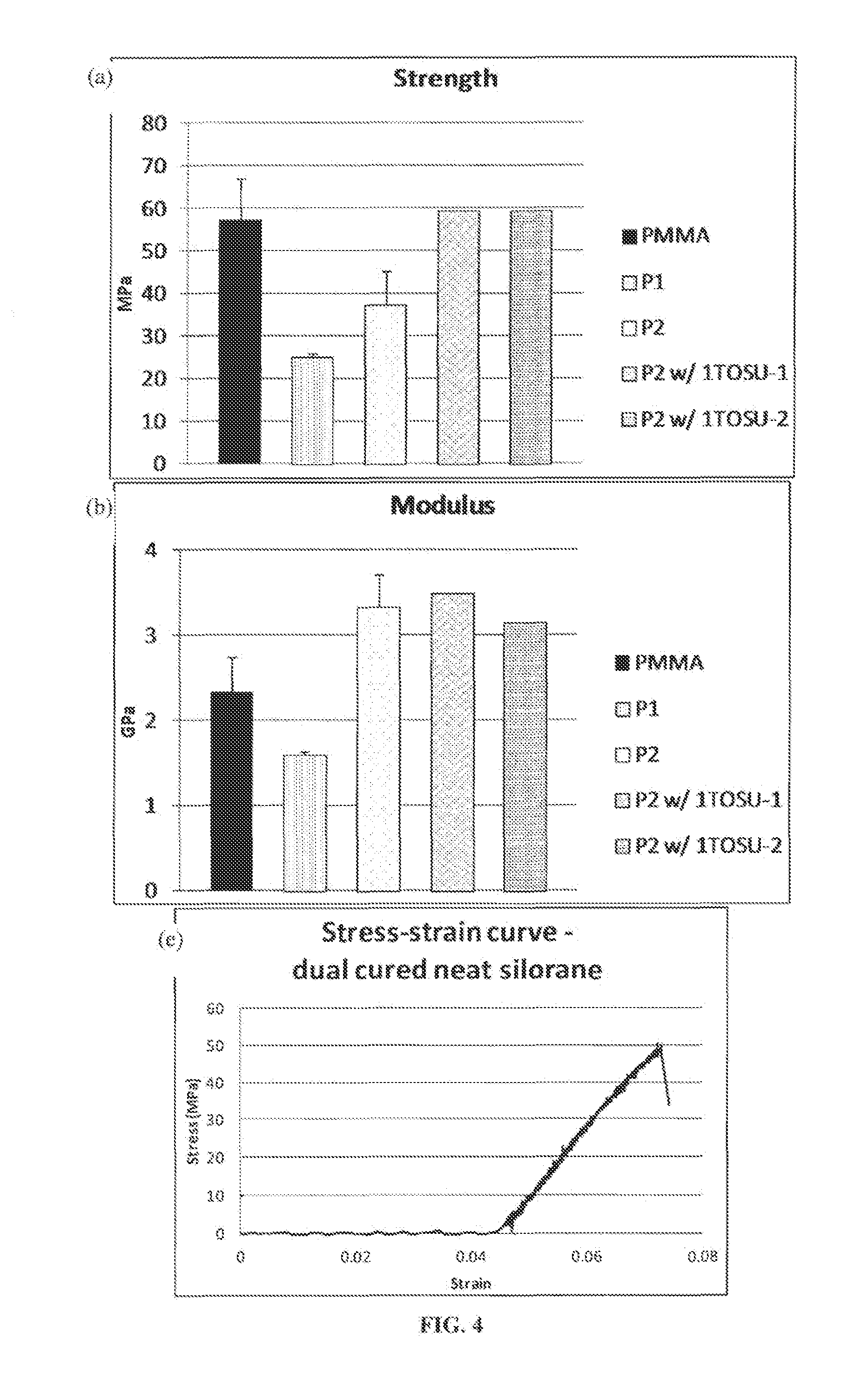Biomaterial compositions
a biomaterial and composition technology, applied in the field of matter compositions, can solve the problems of inactivation or conversion to compounds with potential toxicities, degraded or denatured proteins, and inability to include growth factors in conventional bone cements, etc., to achieve enhanced biocompatibility, less polymerization stress, and reduced cytotoxicity and genotoxicity
- Summary
- Abstract
- Description
- Claims
- Application Information
AI Technical Summary
Benefits of technology
Problems solved by technology
Method used
Image
Examples
example 1
Preparation of Exemplary Bone Cement Compositions
[0128]In this example, various biomaterials useful as bone cement compositions were prepared. All samples were prepared at room temperature (about 20° C.) under yellow light (for the light-initiated systems and the dual chemical / light curing systems, but not the chemical curing systems) in order to prevent premature polymerization. The samples will be referred to as either neat resins (no filler) or filled resin (may include one or more fillers).
[0129]Each of the bone cement compositions comprised two silorane monomers, bis[2-(3{7-oxabicyclo[4.1.0]heptyl})ethyl]methylphenyl silane (PHEPSI) and 2,4,6,8-tetrakis(2-(7-oxabicyclo[4.1.0]heptan-3-yl)ethyl)-2,4,6,8-tetramethyl-1,3,5,7,2,4,6,8-tetraoxatetra-silocane (CYGEP). Both PHEPSI and CYGEP were prepared using adapted procedures and used at purities greater than 95.8% as determined by 1H NMR spectroscopy. See Aoki, U.S. Pat. No. 6,255,428; Crivello, The Synthesis and Cationic Polymeriza...
example 2
Mechanical Testing
Polymerization Stress
[0137]The bone cement compositions of the present invention will be tested for polymerization stress. Two glass rods are placed 1 mm apart on the Bose mechanical testing instrument. Strain during testing will be held constant, less than 1.0 μm deflection, during polymerization. The peak load during polymerization will be used to calculate polymerization stress as generally described in Eick et al., Properties of silorane-based dental resins and composites containing a stress-reducing monomer, Dent Mater 23(8) 1011-1017 (2007), which is incorporated by reference.
Maximum Exotherm Temperature
[0138]Exotherm temperature was measured using a K-type thermocouple (Omega, Stamford, Conn.) affixed to a glass slide and slightly bent so that the tip of the thermocouple was positioned in the center of an acetal resin (Delrin®) washer (McMaster-Carr, Aurora, Ohio), which was also affixed to the glass slide with lab tape. Each composite formulation (0.6 g) wa...
example 3
Cytotoxicity on Neat Dual Cure SilMix
[0145]In this example, the objective was to determine the bone cell growth on chemically cured silorane resins using a polymerization system containing acetic acid as a proton donor plus exposure to halogen lamp. The compositions are described in Table 5. Solid resin discs (9 mm diam×0.5 mm thick) (n=12) were yellow and transparent. Discs passed the GNT and were delivered in a closed plastic container. The discs were yellowish transparent and were used as received (no UV light sterilization as in previous experiments). Discs were placed into 48-well plate (n=4), pre-washed in growth media for 1 h at 35° C. / 5% CO2. Then the wash media was replaced with 0.5 mL MLO-A5 cell suspension containing 2×104 cells. After 24 hours and 48 hours in culture, cell viability was measured using the MTT assay and the number of live and dead cells was measured using the TBE assay. The results are summarized in Table 6 and FIG. 1.
[0146]
TABLE 5Dual Chemical / Light Cure...
PUM
| Property | Measurement | Unit |
|---|---|---|
| wt % | aaaaa | aaaaa |
| wt % | aaaaa | aaaaa |
| wt % | aaaaa | aaaaa |
Abstract
Description
Claims
Application Information
 Login to View More
Login to View More - R&D
- Intellectual Property
- Life Sciences
- Materials
- Tech Scout
- Unparalleled Data Quality
- Higher Quality Content
- 60% Fewer Hallucinations
Browse by: Latest US Patents, China's latest patents, Technical Efficacy Thesaurus, Application Domain, Technology Topic, Popular Technical Reports.
© 2025 PatSnap. All rights reserved.Legal|Privacy policy|Modern Slavery Act Transparency Statement|Sitemap|About US| Contact US: help@patsnap.com



